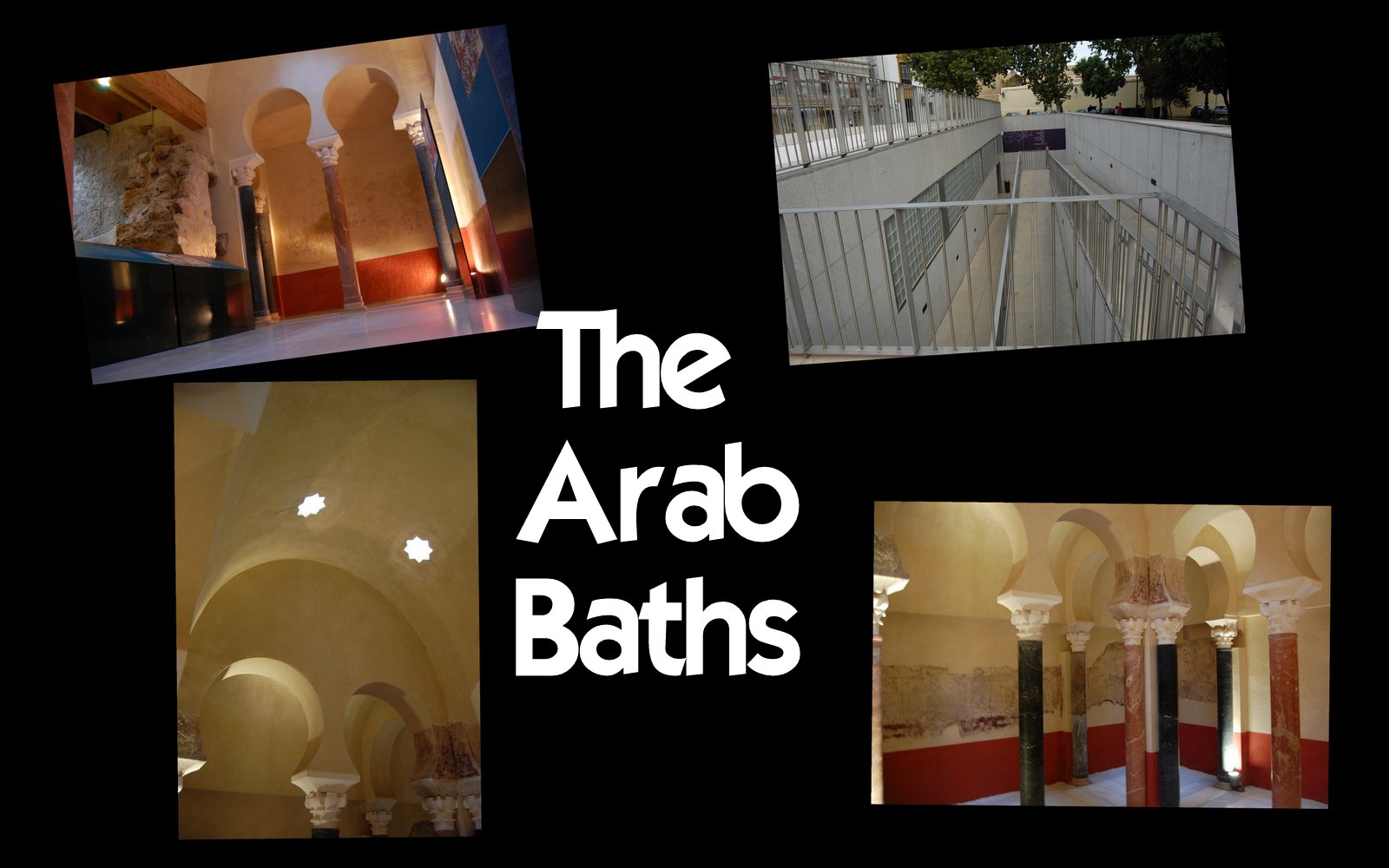
The baths are entered through the modern ramped entranceway pictured below -- utile but quite inconsistent with the Christian city above or the Arab baths below. The baths were built during various architectural phases as well, starting with the work of the great Caliph al-Hakam II (961-976) who created the most beautiful section of the mosque with its Byzantine mosaic-laden mihrab. Business conducted in these baths in those days could affect almost all of Iberia.
Inside, the baths provide some explanation of the rise and fall of the Moors' power and depict Córdoba as it was when it was the Western world’s greatest city around 1000 CE:
Note at the bottom of the picture above how water was extracted from the rio Guadalquivir by a waterwheel and moved by short aqueduct into the mosque area. (The grand Friday mosque is at upper right, but this was one of 700 to 3000 mosques in Córdoba at the time, depending upon what source you find credible.) Three defensive walls protect the rectangular alcazar at upper left from the river. Note the identical mosques with matching minarets between the 2nd and 3rd walls (middle left and center). A sheltered walkway (marked #4 in this picture) allowed those in the alcazar to enter the mosque near the mihrab area. The bridge (lower right) and entrance gate still stand in upgraded versions a millennium later).
All (probably up to 500,000 inhabitants at Córdoba’s peak) had access to baths. Public baths catered to the general population and were much simpler than the royal baths shown here which would have much more decoration and be made of expensive materials such as marble and alabaster. Public baths were often owned by mosques who would charge admission to support the mosque.
Inside, these baths are typical of Arab baths which evolved from those of Roman times (except the Moors poured water over themselves – or had servants do that – rather than immersing themselves.) Baths kept the population clean, but also provided for recreation and commerce in pre-internet days.) Without immersion, the Arab baths cleaned through steam and vigorous scrubbing (usually done by the many servants who tended the people and maintained the baths). Hot water baths were used only in case of illness.Next we visit the Alcazar of the Christian Kings. Please join us by clicking here.
|
Please join us in the following slide show to give Córdoba the viewing it deserves by clicking here. |
|
Geek and Legal StuffPlease allow JavaScript to enable word definitions. This page has been tested in Internet Explorer 8.0, Firefox 3.0, and Google Chrome 1.0. Created on June 15, 2009 |
 |